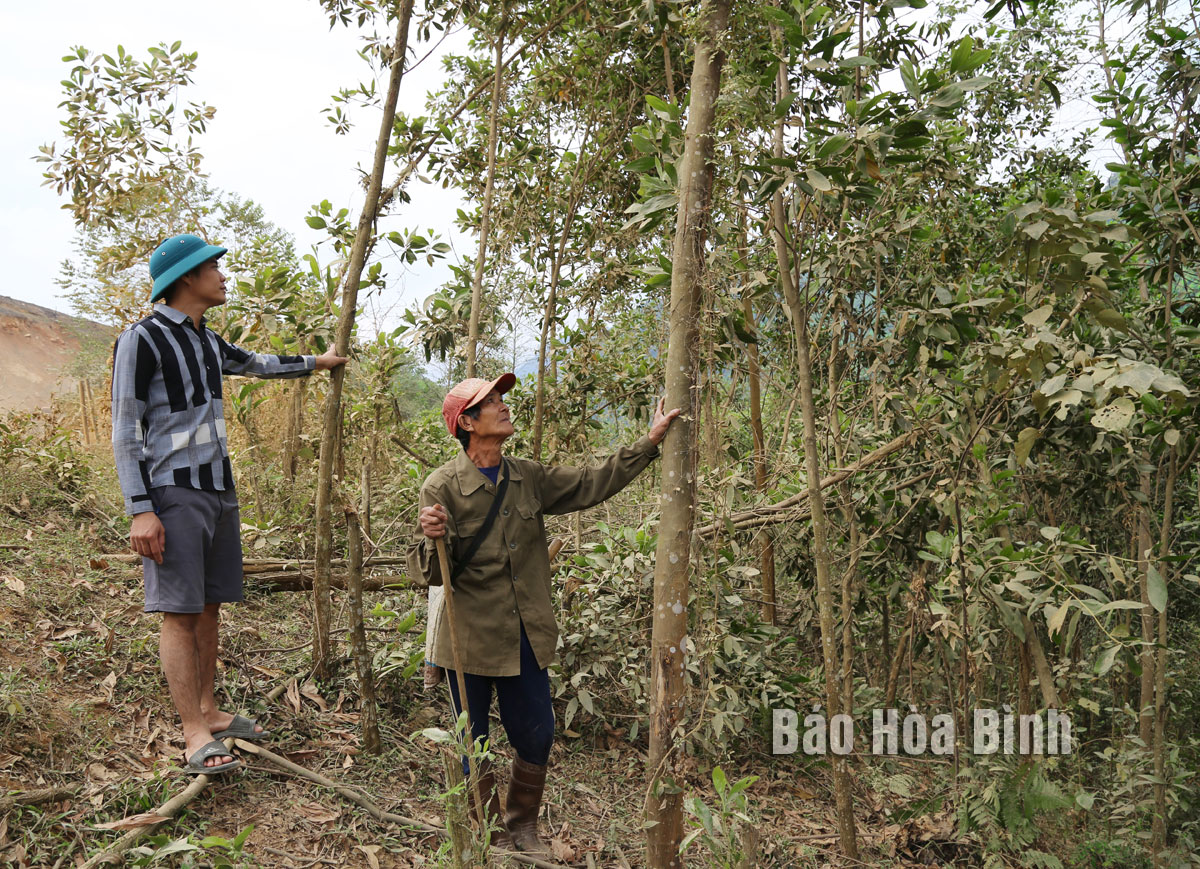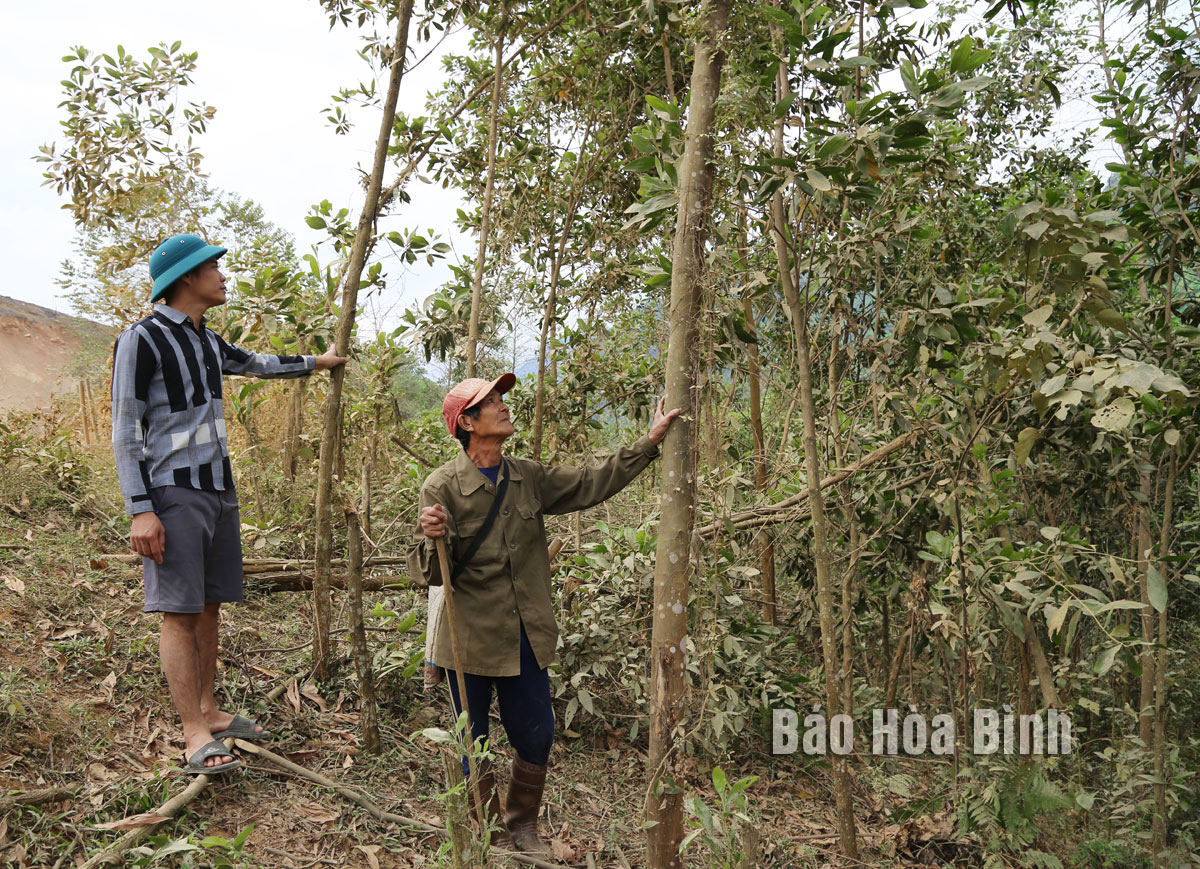
In recent years, ethnic minority households in the province have embraced forestry and livestock farming as key drivers of income generation. By harnessing the economic potential of forests, these communities have not only improved their livelihoods but also contributed to sustainable development.
Residents in Rang hamlet, Cao Son commune, Da Bac district raise their income thanks to afforestation.
Rang hamlet, located in Cao Son commune, Da Bac district, is home to the Dao and Muong ethnic groups. Nestled in a picturesque valley by the Rang Stream and surrounded by lush hills of acacia and Bodhi trees, the village boasts over 200 hectares of production forest. For generations, locals' livelihoods have been intricately tied to the forest.
Dinh Van Son, a resident of Xom Rang, manages over three hectares of forest, primarily acacia. Before the forest was allocated to them, it was covered with bamboo and shrubs, Son recalled. Since receiving the land, they’ve planted multiple cycles of acacia, each generating an income of over 100 million VND (approximately 3,928 USD) after five years.
In addition to acacia cultivation, Son raises buffaloes, grazing them on the hills during the day and sheltering them in the barn at night. "Forestry has provided us with a stable income,” he added.
Similarly, Luong Van Hau, also in Rang hamlet, has secured his family’s financial stability through forestry. With over three hectares of land, his family initially planted acacia on a short 4–5-year cycle. Recently, he extended the cycle to seven years to enhance profitability.
"Acacia cultivation doesn’t require significant investment,” Hau explained. "Each hectare yields about 70 million VND. During the waiting period, we supplement our income by raising livestock and harvesting branches for firewood.”
According to Ngo Van Cuong, Secretary of the Party Secretary of Cao Son commune, residents in other villages are also expanding forestry activities, focusing on planting large timber trees for greater economic returns. "There is a local facility for purchasing and processing raw wood, making it convenient for people to develop forestry-based economies,” Cuong noted.
In Thach Yen commune, Cao Phong district, many households are combining forestry with livestock farming, yielding stable incomes. One such example is Bui Van Chien’s family in Bo hamlet, who earn over 100 million VND annually by raising 10 buffaloes and cows and cultivating three hectares of acacia forest.
Since the beginning of the year, over 8,340 hectares of forests have been planted, equal to 150% of the province’s target, alongside 947,000 scattered trees. With a forest coverage rate exceeding 51.6%, these forests are regarded as the province’s vital "green lungs.”
To further support sustainable forestry development, provincial authorities have implemented various policies, including initiatives to protect forests and alleviate poverty among ethnic minority communities during 2015–2020. Currently, the Hoa Binh forest protection and development project is underway, with a total investment exceeding 127 billion VND.
According to data from the Hoa Binh Provincial Party Committee, the industrial production index for the first six months of 2025 is estimated to have increased by 20% compared to the same period last year. This marks the highest year-on-year growth rate for this period since 2020.
In the first six months of 2025, Hoa Binh province’s export turnover was estimated at 1.145 billion USD, marking an 18.11% increase compared to the same period in 2024. Import turnover was estimated at $ 804 million, a 17.15% increase, which helped the province maintain a positive trade balance.
The lives of the ethnic minority farmers in Tan Lac district have gradually improved thanks to the new directions in agricultural production. This is a testament to the collective strength fostered through the professional associations and groups implemented by various levels of the district’s Farmers’ Union.
With the motto the "product quality comes first,” after nearly one year of establishment and operation, Muong village’s Clean Food Agricultural and Commercial Cooperative, located in Cau Hamlet, Hung Son Commune (Kim Boi district), has launched reputable, high-quality agricultural products to the market that are well-received by consumers. The products such as Muong village’s pork sausage, salt-cured chicken, and salt-cured pork hocks have gradually carved out a place in the market and they are on the path to obtaining the OCOP certification.
In the past, the phrase "bumper harvest, rock-bottom prices" was a familiar refrain for Vietnamese farmers engaged in fragmented, small-scale agriculture. But today, a new spirit is emerging across rural areas of Hoa Binh province - one of collaboration, organisation, and collective economic models that provide a stable foundation for production.
Maintaining growing area codes and packing facility codes in accordance with regulations is a mandatory requirement for agricultural products to be eligible for export. Recently, the Department of Agriculture and Environment of Hoa Binh province has intensified technical supervision of designated farming areas and packing facilities to safeguard the "green passport" that enables its products to access international markets.



